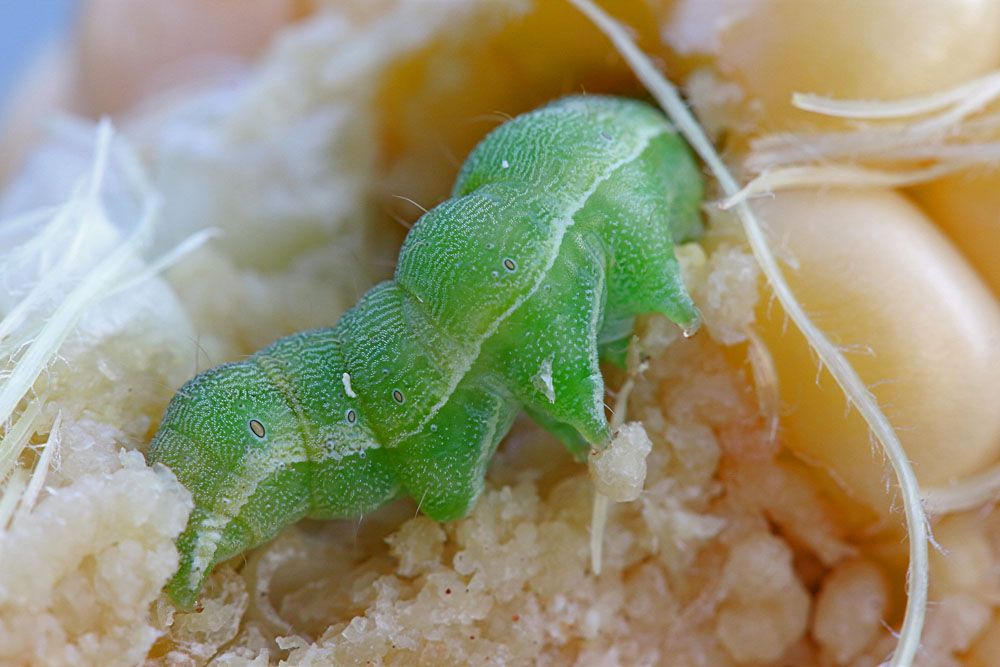
Corn Earworm – Tomato Fruitworm – Cotton Bollworm – Helicoverpa zea
Corn Earworm: Appearance, Territory, Damage and Life Cycle
Latin Name: Helicoverpa Zea
Common Name: Tomato Fruitworm – Cotton Bollworm
Appearance: Helicoverpa Zea, sometimes known as the maize earworm, is a species in the Noctuidae family. Helicoverpa Zea larvae are a significant agricultural pest. Because it is polyphagous (feeds on a variety of plants) during its larval stage, the species has been given a variety of common names, including cotton bollworm and tomato fruitworm. It also eats a wide range of other crops. The adult stage is a brownish to buttery-yellow moth with a wingspan of 1 1/4 to 1 1/2 inches. Darker bands are frequently visible at the tips of the front and rear wings.
Hosts Plants: Corn and tomatoes are the most usually damaged vegetables, although earworms will also feed on many other vegetables, many field crops, certain ornamentals, and a broad variety of wild plants. The caterpillar’s name is frequently based on the host plant, such as maize earworm, tomato fruitworm, cotton bollworm, soybean podworm, or sorghum headworm.
Territory: Except for northern Canada and Alaska, corn earworm may be found across North America. Corn earworm does not generally overwinter well in the northern states of the eastern United States. Depending on the harshness of the winter cold, it has been reported to survive as far north as 40 degrees north latitude, which corresponds to Kansas, Ohio, Virginia, and southern New Jersey. It is, nevertheless, widely dispersed and frequently extends from southern states to northern states and Canada. Depending on location and temperature, places may have overwintering, both overwintering and immigrant, or immigrant populations. Corn earworm may overwinter as far north as southern Washington in the comparatively warm Pacific Northwest.
Damage Insect Cause: Feeding on the terminals of immature plants and the ears (on the kernels) of older plants causes com damage. Tomatoes and peppers are mostly harmed by larvae burrowing into the fruit. Larvae eat the leaves and pods of beans and cowpeas, as well as the pods of okra.
Life History and Habits: This species is active all year in tropical and subtropical climes, but becomes more limited to the summer months as latitude increases. Due to the vagaries of weather, dispersing adults may arrive as early as May or as late as August in the northern states; hence, their population biology is erratic. The number of generations is commonly reported to be one in northern areas such as most of Canada, Minnesota, and western New York; two in the northeastern states; two to three in Maryland; three in the central Great Plains and northern California; four to five in Louisiana and southern California; and possibly seven in southern Florida and southern Texas. The life cycle takes roughly 30 days to complete.
